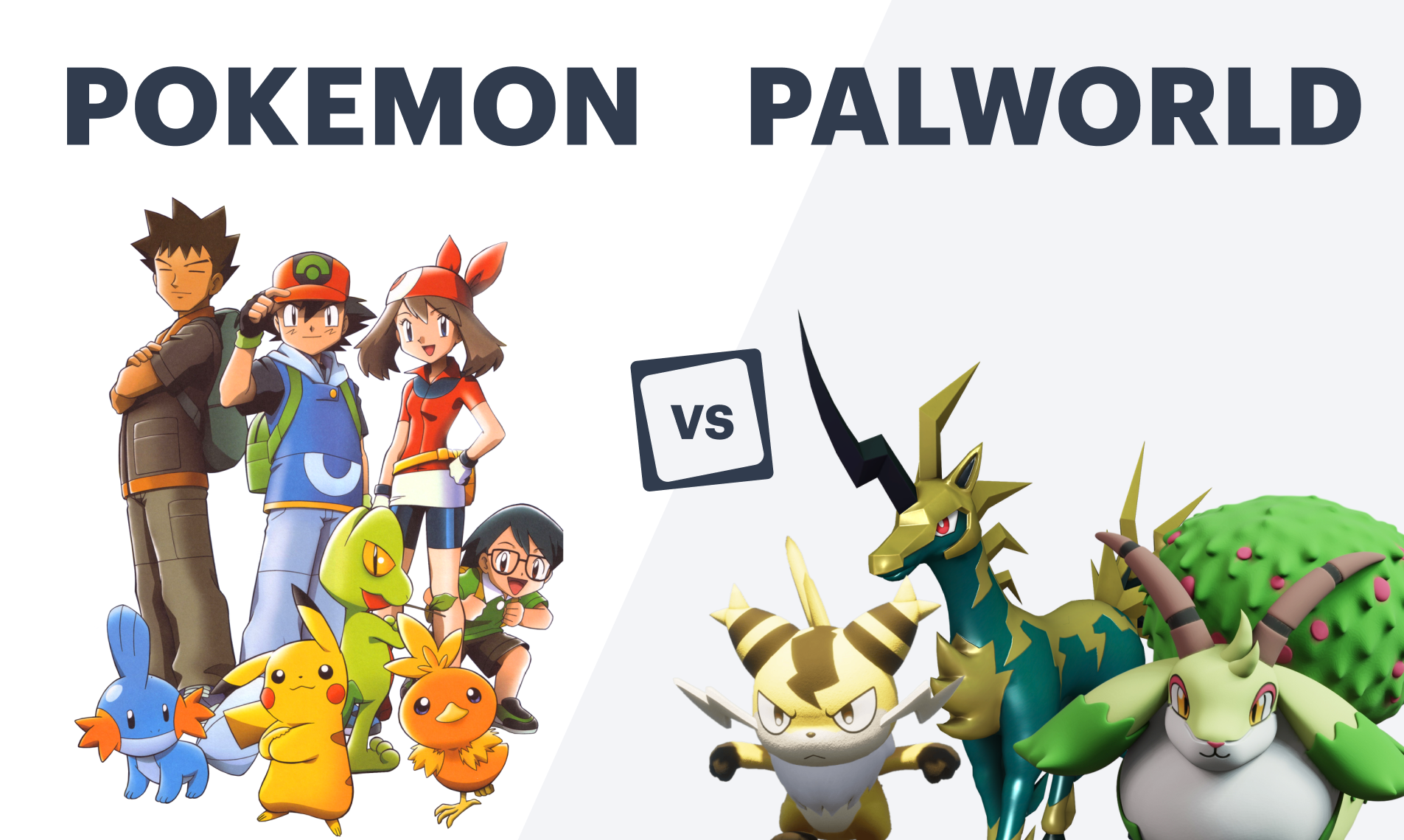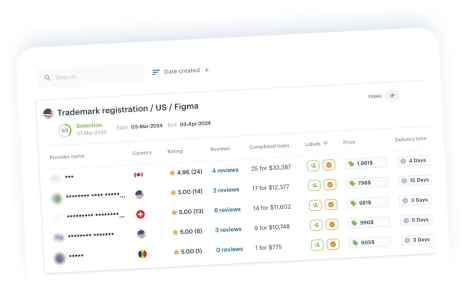Discover how Nintendo transformed the patenting of UX and game mechanics into a strategic weapon that protects its products worldwide. This article will help you understand why, without a smart IP strategy, innovation becomes vulnerable — and how to avoid mistakes that can cost millions.
In 2024, the global video game market was valued at $221.24 billion, and it’s projected to reach $424.23 billion by 2033. But as the market grows, so does competition — not just for players, but for technology itself. The more complex and unique gameplay mechanics, interfaces, and UX solutions become, the higher the risk they’ll end up at the heart of patent disputes. In this new reality, it’s not enough for developers to simply build — they must also know how to defend.
Patent disputes are becoming an inherent part of game development, bringing intellectual property (IP) strategy to the forefront. And that’s not just because of competitors — the industry is under pressure from so-called patent trolls: legal entities that exist solely to file lawsuits. A single lost patent battle can cost a studio millions or even halt product development entirely.
Within this landscape, Nintendo stands out as one of the most systematic players in IP protection. As of 2024, the company owns 8,541 patents globally — nearly 7,000 of which have already been granted, and over 75% remain active. The global footprint is impressive: 3,036 patents in Japan, 2,833 in the U.S., 909 in the European Patent Office, and hundreds more in Germany and China. These numbers underscore Nintendo’s active and targeted patenting efforts in key regions.

But Nintendo doesn’t patent just for show. It builds a full-fledged strategy around its IP: with priority filings, multi-level enforcement tactics, and laser-focused protection of elements that copyright can’t cover — gameplay, mechanics, and controls. That’s how the company turns patents from bureaucratic formality into a real tool for controlling its technological platform.
Nintendo vs. Pocketpair (2024–2025): When Inspiration Turns into Legal Risk
In January 2024, Palworld hit the market — an explosive mix of Pokémon, survival, and guns. It immediately caught the public’s attention. But just months later, Nintendo and The Pokémon Company filed a lawsuit, claiming that behind its “original” exterior, the game borrowed heavily from patented gameplay mechanics. The dispute centered not on visual similarities, but on specific technical solutions shaping the player experience.

At the heart of the claim is Patent №7545191, which describes a system where a player targets and throws an object that affects creatures in the game world, then switches to combat mode to release a captured ally into battle. This logic, Nintendo claims, is nearly identically reproduced in Palworld, where “Pals” function like Pokéballs and follow the same control pattern. Patent №7493117 extends the idea with a structure for multi-mode control — using the same mechanic for both capture and combat. Patent №7528390 covers creature-based travel with seamless transitions between air and ground — another feature allegedly replicated in Palworld.
Crucially, Nintendo isn’t relying on copyright here — it’s nearly impossible to prove a “monster with a gun” is a copy. The focus is on patents, which deal with algorithms and interaction structures. That enables Nintendo to argue in the language of interfaces and logic, not visuals. Pocketpair, for its part, claims its mechanics passed legal review before launch and infringe on no existing rights. While Nintendo’s patents were registered after Palworld’s release, they’re based on applications with priority dates from 2021 — giving the company full grounds for claims.
As of spring 2025, the lawsuit is ongoing. Nintendo seeks a ban on Palworld distribution in Japan and ¥10 million (~$68,500) in damages, with the option to expand claims internationally. The company has already begun filing patents in the U.S., indicating potential global escalation.
The key lesson: the more innovative your mechanics, the earlier you need to think not just about implementation — but about protecting your right to own them.
Via platforms like iPNOTE, you can file global patent applications — quickly, transparently, and with full legal support. We help developers, startups, and studios secure their tech from copying and lawsuits, while maintaining control over their ideas.
Nintendo vs. Colopl (2017–2021): When Finger Gestures Become a Legal Weapon
Back in 2017, Nintendo sued Japanese developer Colopl, claiming its mobile game White Cat Project infringed key patents related to touchscreen controls. Visually, Colopl’s project didn’t resemble Nintendo’s games — but Nintendo argued it replicated critical UX technologies, from the virtual joystick to 3D spatial interaction logic.
Central to the case was Patent JP3734820, which protects a control mechanic using a virtual joystick on a touchscreen: the player touches the screen, moves their finger, and the movement is interpreted as direction and speed. This exact system — branded “Punicon” — was used in White Cat Project. Nintendo argued this wasn’t just similar — it was a direct copy of their patented input method.
Additional patents in the case included:
- JP4262217 — for using swipes and gestures to trigger attacks (e.g., hold for a charged attack, swipe for a regular one),
- JP5595991 — for touchscreen targeting and directional actions based on finger movement,
- JP3637031 — for an auto-camera that makes objects transparent if they block the player,
- And patents for asynchronous multiplayer interaction, syncing one player’s actions with another’s.
Nintendo’s position was clear: these are not abstract ideas, but concrete interaction elements, patented long before White Cat Project launched. Colopl tried to prove independent development but ultimately settled in 2021 — agreeing to pay ¥3.3 billion (~$22.5 million) and license all disputed patents.
This case highlights the legal weight of “invisible” game design choices — not characters or graphics, but input logic, camera behavior, and gesture interpretation. A similar precedent appeared in one of tech’s most famous patent wars: Apple vs. Samsung, where UX gestures like pinch-to-zoom and bounce-back were successfully defended as intellectual property.
Lesson for mobile and indie developers: if left unprotected, your core mechanic can shift from advantage to vulnerability.
The Wii Remote Wars: How Nintendo Defended the Controller That Changed the Industry
The launch of the Nintendo Wii in 2006 was a technological breakthrough — thanks to the Wii Remote, which let players control games through body movement. But innovation came with legal risks: the novel control scheme quickly attracted attention from competitors and patent holders.
The first challenge came from Interlink Electronics in late 2006, which claimed the Wii Remote infringed its patent for a trigger-based pointing device (U.S. Patent No. 6,850,221). Nintendo quickly shut it down, proving the Wii Remote’s structure was fundamentally different. The case was dismissed by March 2007.
A more serious threat came from Anascape Ltd., which accused both Nintendo and Microsoft of infringing 12 patents related to analog pressure sensors in controllers. In 2008, a court sided with Anascape, ordering Nintendo to pay $21 million. Nintendo appealed and, in 2010, won: a federal court overturned the verdict, ruling that Nintendo had not infringed.
Then came iLife Technologies, which in 2013 sued Nintendo for allegedly infringing a patent related to motion detection in medical systems. In 2017, a Texas court awarded iLife $10 million. But once again, Nintendo appealed — and won. In 2020, the patent was invalidated as overly broad and non-specific.
Each of these cases shows that unique hardware requires more than engineering — it needs airtight legal protection. Nintendo wasn’t the aggressor here but a defending innovator, ready to fight when critical parts of its platform were on the line.
The takeaway: even when your position seems weak (e.g., defending a “similar idea”), you win by being strategically and legally prepared.
What Powers Nintendo’s Strategy: Patent as Weapon, Not Insurance
Analyzing the three key cases — Pocketpair, Colopl, and the Wii Remote disputes — reveals Nintendo’s IP protection strategy as a deliberate, multi-layered system. Unlike copyright, which protects content, Nintendo targets the fundamentals of user interaction: controls, gameplay scenarios, and interface logic.
1. Patents as a Tool of Leverage and Control
In every case, Nintendo avoided debates over visuals or storylines. Instead, it relied on registered patents: mechanics for capturing and using creatures (Pocketpair), UX elements like virtual joysticks and targeting (Colopl). This makes their strategy broadly applicable: it defends functions, not aesthetics; structures, not vibes.
2. Preemptive Patenting: Think Ahead of the Trend
Nintendo files patents early — often years before a dispute. The patents in the Palworld case, for example, had priority dates from 2021. This is more than foresight — it’s strategic deterrence: a minefield of rights that competitors can’t cross without triggering legal consequences.
3. Focus on Interaction, Not Imagery
Nintendo’s focus is clear: protect aiming mechanisms, interface logic, gestures, camera behavior — not characters or artistic style. This aligns with the philosophy seen in Apple’s landmark case with Samsung, where it was not the visuals but the gestures that mattered.
4. Flexible Enforcement: From Pressure to Global Escalation
Nintendo adapts its enforcement tactics. With Colopl — aggressive litigation in Japan, followed by a licensing deal. With Pocketpair — international escalation via U.S. patent filings. With iLife — a defensive appeal that nullified the plaintiff’s patent. This agility lets Nintendo balance risk, cost, and reputation.
Nintendo’s Patent Strategy Architecture
- Patent Filing:
- Identify key UX and mechanic elements early in design;
- Draft broad technical claims;
- Register in Japan, U.S., EU — before launch.
- Enforcement:
- Systematically monitor the industry (especially indie and mobile);
- Use patents as barriers, not just licensing tools;
- Prioritize platform protection over monetization.
- Copyright as a Backup, Not a Foundation:
- Copyright can’t protect mechanics;
- Patents provide clarity and leverage.
What This Means for Developers
If you’re creating a game or product — especially in mobile or indie — know that conflict with a major platform might not be over characters, but gameplay logic. Nintendo’s strategy treats the patent as the primary tool of business protection — not a just-in-case formality.
Bottom Line:
Conducting a patent audit early, tracking existing patents in your field, and working with IP attorneys isn’t overkill — it’s part of a mature product strategy.






